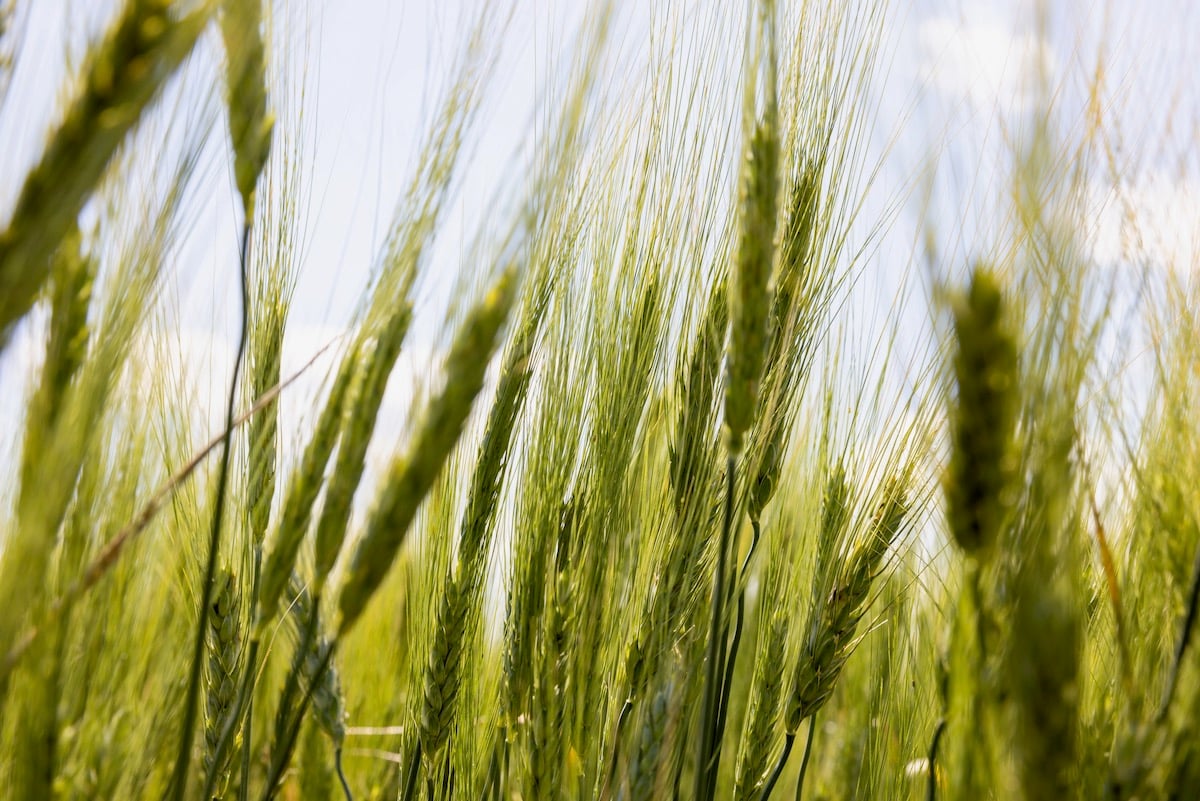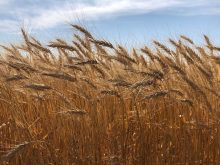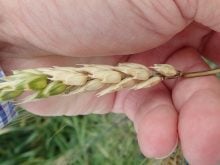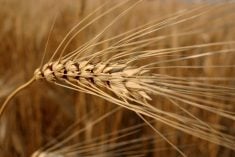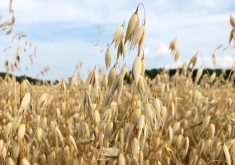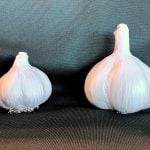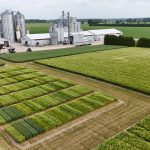When it comes to developing new varieties of cereal crops, the focus of those efforts can be as much about what doesn’t work as what does, says one breeding expert.
Francois Eudes is the director of research, development and technology for the science and technology branch at Agriculture and Agri-Food Canada (AAFC) at Lethbridge. As part of his role, he oversees AAFC’s breeding, innovation and crop germplasm development.
Eudes says a big part of the multigenerational approach to breeding new varieties of cereal crops such as wheat and barley is eliminating offspring that won’t perform at sufficiently high levels.
Read Also
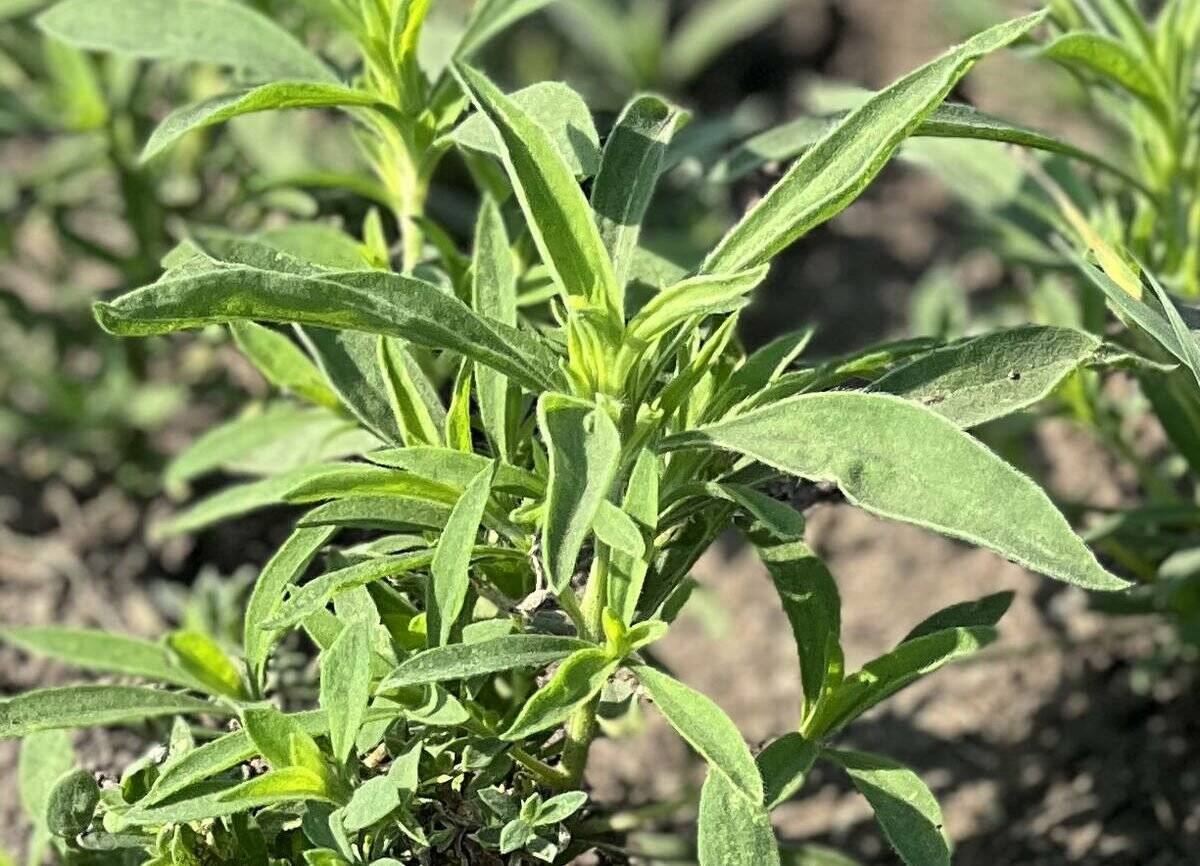
FMC rolls out new burnoff herbicide combo for cereal growers
FMC Canada has launched Avireo, a unique co-pack combination in the pre-seeding and pre-emergence burnoff market for use by wheat, durum and barley growers in the four western provinces.
“The selection process is much more about the elimination of poor genetics among the sister lines. We’re going to eliminate the poor-performing one under selection for some traits and move the better one to the next generation where another selection is going to be done,” he says.
The development of new cereal crop varieties is unique in comparison to most other crop types. Most of the crop breeding efforts in Western Canada are conducted by the public sector. That includes AAFC as well as post-secondary institutions such as the University of Saskatchewan, through its Crop Development Centre (CDC), the University of Alberta and the University of Saskatchewan.
In most cases, those institutions don’t directly commercialize the varieties they develop. Instead, they partner with stakeholders such as seed companies to commercialize those varieties through variety licensing agreements.

Curtis Pozniak, a professor and director of the CDC at the U of S, says it takes, on average, eight to 10 years to develop a new variety, which means breeders need to “have a bit of a crystal ball” when determining what the priorities need to be for future varieties.
The main areas of focus for breeders are typically yield and reliable yield performance in a range of different environments and soil types; disease and insect resistance; and tolerance to abiotic stresses such as drought and heat.
Marketability is another important consideration when developing new varieties of cereal crops, Pozniak adds.
“If you look at barley used in brewing, there’s a very specific quality profile that’s in demand by the industry and by the end-use customer. Likewise with wheat and durum, the quality profiles are very well defined in terms of what our customers are looking for,” he says.
“It’s all about developing the package of yield, reliability and marketability that’s most important, really pushing the yield envelope and having that combination of agronomic traits and pest-resistant traits that growers are demanding, while still maintaining that marketability and end-use quality.”
Like most crops, cereals have had to endure a wide range of severe weather conditions across Canada in the last several years, including drought and extended periods of extreme heat.
While that has been an important consideration when it comes to breeding efforts in cereals, it is not an entirely new breeding target. Pozniak says plant breeders have historically tested new cereal varieties in a wide range of conditions in order to select products that will perform well across a range of environments, and that continues to be the case.
“I wouldn’t say we’re necessarily focusing more on selecting for heat and drought tolerance. That has always been a breeding target, but the extreme heat and drought like we experienced this past summer have really provided us with the opportunity to evaluate those genetic combinations that do well,” he says.
Ellen Sparry, general manager of C&M Seeds at Palmerston, Ont., agrees. She recently came across a paper from the Canadian Journal of Research from 1936 referring to studies on drought resistance in spring wheat.
“It is always on a breeder’s radar to try and select the right varieties that combat drought and other climate challenges. That’s why we test varieties over several years before taking anything to commercialization,” she says.
That said, breeders are having to look at things in a slightly different, climate-induced light, she adds.
For example, changing climates have forced plant breeders to respond to shifts in disease. Sparry cited an example of a winter wheat her company developed that was wiped out in a single year due to leaf rust.
“It had good tolerance and then we had a shift one year and it was all but wiped out of the marketplace,” she says.
Eudes agrees climate change and extreme weather conditions are prompting plant breeders to look at some things in a new light. For crops such as wheat, he says that includes looking at varieties that have been grown in other countries to deal with even hotter and drier conditions and adapting that germplasm so those varieties can be successful here in Canada.
‘Nimble’
Plant breeding has traditionally been a marathon rather than a sprint, but some new tools have the potential to change that.
Gene editing technology has been around for some time but it’s still a relatively new concept in terms of Canadian agriculture. AAFC seeded the federal government’s first plots of gene-edited wheat in Lethbridge earlier this year.
Sparry says gene editing has the potential to be a game-changer when it comes to breeding new varieties of wheat and other cereal crops.
“I think it’s always on a breeder’s mind that they have to be nimble, which is not an easy thing to do in a breeding program,” she says. “Perhaps gene editing can get us there a little quicker. Hopefully, this is a goal that allows breeders to adapt a little bit quicker to changing situations.”

Tyler Groeneveld concurs. Groeneveld is the North American director of grains and oils for Corteva Agriscience. The company spends $4 million a day on research and development and, he says, a tool like gene editing has the potential to unlock a host of new opportunities.
“The advent of gene editing and our expertise with that particular modern plant breeding tool means that we’ll be able to identify and commercialize traits of interest and seed technology quicker than we would in the traditional biotechnology route to market,” he says.
Another relatively new tool that could help plant breeding efforts is phenomic selection. It’s a low-cost, high-throughput alternative to the use of genetic markers, employing spectral data to predict complex traits with statistical models that use software algorithms.
Eudes says phenomic technology is still relatively new here in Canada but has been in use in Europe for more than a decade already. In one example of its use, multiple data sets could be collected via drones to monitor a crop and predict its performance even before that crop has reached maturity.
“That way, a decision could be made earlier, either to continue the evaluation of the line or essentially eliminate that line,” he explains.
‘Diversification’
As these new tools and technologies continue to evolve, new varieties of cereal crops are being introduced into the developmental pipeline.
Earlier this year Corteva introduced its new Trusource wheat. Trusource is a high-fibre durum wheat that provides increased dietary fibre in everyday foods such as pasta. It’s currently available to food companies for trial in product development and will be released commercially to farmers sometime in the next few years.

“Trusource wheat will bring new nutritional innovation to wheat and … benefits compared to traditional wheat. It supports improved gut health and blood sugar management. It helps promote satiety (fullness),” Groeneveld says.
“It’s a very exciting opportunity when we look at market diversification and increase in value for a crop that Canada is known for — being a very high quality, reliable supplier in durum to the global market.”
AAFC is expected to announce its next set of co-op trials and which lines it will register following the Prairie Grain Development Committee’s meeting in February.

Eudes says one of the most promising cereal crops AAFC has in its developmental pipeline is a durum wheat that was developed in Swift Current. It has been shown to have intermediate resistance to fusarium head blight (FHB) — the first durum wheat in Canada to be so rated. It was registered in February 2023 and should be available to farmers within the next two years.
In addition, AAFC breeders are working on a new higher-performing variety of milling oat as a replacement for AC Morgan which, Eudes says, is getting “a bit old,” having been around since 1999.


